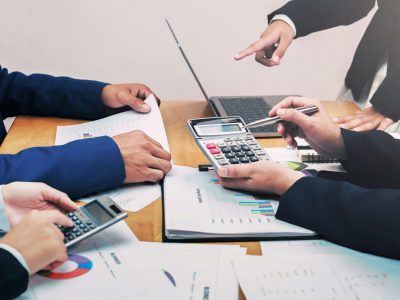Content

You need to calculate the trial balance at the end of the fiscal year. The objective of the trial balance is to help you catch https://www.bookstime.com/blog/a-rundown-of-the-new-i-9-form-for-2017 mistakes in your accounting. All accounts are divided into five categories in order to record business transactions.
- The first step to preparing an unadjusted trial balance is to sum up the total credits and debits in each of your company’s accounts.
- Closing entries are the journal entries that are made at the end of the accounting period to close temporary accounts and then transfer their balances to permanent accounts.
- Throughout this section, we’ll be looking at the business events and transactions that happen to Paul’s Guitar Shop, Inc. over the course of its first year in business.
- Some companies prepare financial statements on a quarterly basis whereas other companies prepare them annually.
- If you can’t track your transactions accurately, the following steps won’t be able to create a clear accounting picture.
- Balance sheet accounts (such as bank accounts, credit cards, etc.) do not need closing entries as their balances carry over.
- That’s why today we will discuss the eight accounting cycle steps you can follow to ensure accuracy.
If you need a bookkeeper to take care of all of this for you, check out Bench. We’ll do your bookkeeping each month, producing simple financial statements that show you the health of your business. Give your staff the tools they need to succeed in implementing the accounting cycle. This could mean providing quarterly training on best practices, meeting with your staff each cycle to find their pain points, or equipping them with the proper accounting tools.
Firm of the Future
The general ledger is a central database that stores the complete record of your accounts and all transactions recorded in those accounts. That being said, accrual accounting offers a more accurate picture of the financial state of any given business, which is why in some cases, companies are obligated by law to use this method. Making two entries for each transaction means you can compare them later.
In a service business, revenue is typically recognized when the service is performed, whereas, in a merchandising business, revenue is recognized when the goods are sold. According to cloud accounting statistics, most companies store these statements accoutning cycle safely using modern technological tools. Consider using receipt-tracking software to organize transactions and expenses correctly. If you use accounting software, this usually means you’ve made a mistake inputting information into the system.
Step 8. Close the books
Assets are everything a company owns, and liabilities are everything a company owes. The balance sheet is one of the essential financial statements established throughout the accounting cycle. A business starts its accounting cycle by identifying and gathering details about the transactions during the accounting period.
- Finally, you need to post closing entries that transfer balances from your temporary accounts to your permanent accounts.
- That being said, accrual accounting offers a more accurate picture of the financial state of any given business, which is why in some cases, companies are obligated by law to use this method.
- This stage can catch a lot of mistakes if those numbers do not match up.
- Thus, staying organized throughout the process’s time frame can be a key element that helps to maintain overall efficiency.
- Having eight steps in the overall accounting cycle may seem pretty straightforward, but it also means there are eight chances for your process to go awry.
Every individual company will usually need to modify the eight-step accounting cycle in certain ways in order to fit with their company’s business model and accounting procedures. Modifications for accrual accounting versus cash accounting are usually one major concern. Closing entries are the journal entries that are made at the end of the accounting period to close temporary accounts and then transfer their balances to permanent accounts.
Understanding the 8-Step Accounting Cycle
Now, transactions in journal are recorded in the order in which they occur. The whole exercise of recording transactions in journal is referred to as journalising. The accounting cycle helps produce helpful information for external users, such as stakeholders and investors, while the budget cycle is specifically used for internal management. For example, if a business sells $25,000 worth of product over the year, the sales revenue ledger will have a $25,000 credit in it. This credit needs to be offset with a $25,000 debit to make the balance zero. The ledger is a large, numbered list showing all your company’s transactions and how they affect each of your business’s individual accounts.

The accounting cycle is a set of steps that are repeated in the same order every period. The culmination of these steps is the preparation of financial statements. Some companies prepare financial statements on a quarterly basis whereas other companies prepare them annually.

